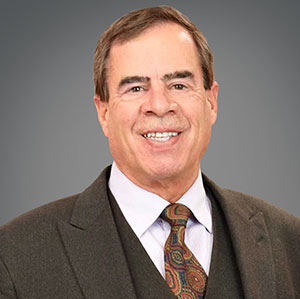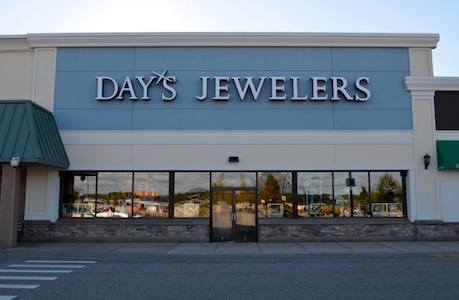
For years, Jeff Corey considered exit strategies for his eight-store chain, Day’s Jewelers. And he didn’t like any of them.
“[Wife] Kathy and I have always owned 100% of the business,” he says. “We had several options presented to us. First, we could liquidate, which would violate our original vision of building a business that would last.
“The second option was to pass it on to family. Over the years, 50% of our profits has gone to the government [in taxes], the other 50% has been used to buy merchandise. We don’t have a lot of savings. We needed money to retire.
“The third option was to sell it to a third party. You hear so many companies say that when a company is sold, its culture changes. That is not what we wanted.”
So he went with a fourth, far-less-common option: On Nov. 1, Waterville, Maine–based Day’s became 100% employee owned—or, as it’s otherwise known, an S corporation ESOP (employee stock ownership plan).
Under the new structure—known as a leveraged ESOP—the Coreys sold the business to an employee-owned trust, which is managed by two longtime Day’s employees and an ESOP specialist. Jeff and Kathy will receive a certain amount of cash up front and be paid the rest over time.
All the company’s 125 employees will be granted shares in the trust, with the number determined by their salary and tenure. Like a 401(k), the shares take years to fully vest and can’t be cashed out at full value until the employee reaches retirement age. (Workers can cash out earlier, but they incur penalties.)
Yet, unlike a 401(k), employees don’t have to contribute anything to get the shares; they are provided as an extra and don’t affect their standard salary and benefits.
That said, while the ownership of Day’s may have changed, most things about the company won’t. Jeff and Kathy’s son Joe will remain president, the role he assumed in January. Decisions will still be made by company management—though shareholders (meaning employees) would need to approve any sale or liquidation.
Still, the ESOP concept works best in “companies that have a culture of transparency and involve employees in decision-making,” Jeff says.
Jeff and Kathy will remain on the company’s board for the immediate future but say they’ll be mostly watching from the sidelines.
“We worked a lifetime to have a company we are really proud of,” Jeff says. “We want to step back and enjoy our six grandchildren.”

One of the prime benefits of becoming 100% employee owned is that Day’s will pay no income tax, either federal or state, which removes a big burden from its books.
Moreover, employee ownership can improve company performance, as the workers feel they have a stake in the business. Jeff says: “The better they do at increasing sales and reducing expenses and caring for their customers, the more they will put into their retirement account.”
Joe concedes the employees won’t be making much right away, as the company still owes money to his parents and the bank.
“But once these original notes are paid down. the gains and profits can be pretty substantial,” he says.

ESOPs are regulated by the U.S. Department of Labor and must be approved by the Internal Revenue Service. Crafting the Day’s plan required five years and a lot of legal fees. “It probably took a little bit longer to execute than usual,” Jeff says. “I like to do a lot of research before I jump into things.”
That meant many talks with Kesslers Diamonds, the Wisconsin jeweler that is also employee owned. “We were looking for the downsides,” Jeff says.
He didn’t find many, though he admits his payout may have taken a hit.
“We got the [company] valuation [from the independent auditor] three days before the closing,” he says. “We didn’t even know what they were going to pay us.
“We probably would have gotten more money from an outright sale. But who really knows what we would have made? We definitively would have gotten our money up front, and we would have been paid sooner. But we wanted to walk away with a situation we were comfortable with.”
Joe says that comfort is key and that ESOPs aren’t for everyone.
“They can be expensive to put together and there will be ongoing costs [related to the annual] valuation. But we have heard what happens with a lot of these companies, they sell to a third party, and it becomes completely different. We have always had a strong culture. And for us, and for the people who worked so hard to build this company, this was our way to retain those things.”

“You have the right culture to make it fit,” says Kathy. “If your mission statement is to build a company that stands the test of time, then you really have to stand by that. Of all the exit strategies, it was the best by far. It just felt right for Jeff and me.”
Once employees wrap their heads around it, they’re generally pleased, Jeff says. “They ask, ‘what’s the catch?’ We say, ‘there is no catch.’ ”
He thinks customers will like the idea too. “People like to buy from the owner of the business. This lets them know that, whoever they’re dealing with, they have a stake in the company.
“We can still call ourselves a family business. Now we have a much larger family.”
Top: A Day’s Jewelers store in Augusta, Maine (photos courtesy of Day’s Jewelers)
- Subscribe to the JCK News Daily
- Subscribe to the JCK Special Report
- Follow JCK on Instagram: @jckmagazine
- Follow JCK on X: @jckmagazine
- Follow JCK on Facebook: @jckmagazine






